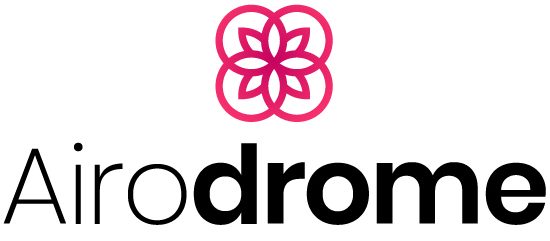What is a Trade Show? The Ultimate Guide

What is a Trade Show? The Ultimate Guide
The coronavirus hit the U.S. pandemic. The B2B market for trade shows plunged to $ 3.9 billion in 2020 but rebounded in a big manner to reach $ 10.2 billion two years later. This shows how important trade shows are to many B2B businesses.
What makes these events so unique? What is it about these events that makes them so attractive to both start-ups as well as enterprises? This blog will answer these questions, explain the importance of trade shows, show you some B2B tradeshows, and give you tips on how to prepare for them.
What is a trade show?
Expos are important events that bring together companies to display their latest products and services. Trade shows are not just corporate gatherings. They are arenas for opportunity in the world of commerce and competitiveness.
In-person and Virtual Trade Shows offer a lively platform for interaction and negotiation. They also serve as a melting pot of ideas, where the latest innovations and trends are discussed and displayed.
These events are usually held in large convention centers or on a digital trade show platform. The duration of these events can range from one day to a week, depending on their scope and purpose.
Companies that participate in trade shows often create a booth where they can interact directly with the attendees. This could include product demonstrations, giving out promotional material, or providing additional information about the business and its offerings.
The Key Elements for a Tradeshow
Exhibition hall: The exhibition hall is the heart of the trade show, as it brings many innovations, technologies, and business solutions. They pay for a space to showcase and demonstrate the latest products and services. These companies use these spaces to build their brand and strengthen relationships with potential clients.
Tradeshow Booths: A booth or stand is a physical space that an exhibitor occupies. This space is where first impressions are created, so it’s important to design and present this space well. Many companies invest heavily in the design of their booths. They incorporate engaging displays, interactive demos, and branding. The goal of a booth is to provide an interactive, memorable experience and attract attendees.
These booth designs are perfect for your next event.
Visitors: These visitors are those who attend the trade show. They can be professionals within the industry, such as potential buyers, analysts, journalists, and even competitors. Attendees attend trade shows to discover the latest trends and new products and services, make business connections, and learn about industry professionals.
Presentations and Seminars: Many shows offer a variety of presentations, workshops, and seminars led by experts in the industry. These sessions provide attendees with educational opportunities, including hot topics, industry trends, and practical skills. These sessions also offer thought leaders a place to share their experiences and insights.
Opportunities for Networking: Networking at trade shows is one of their most valuable features. Trade shows offer a variety of networking opportunities, from casual conversations in booths to formal events. These connections may lead to future business partnerships or collaborations.
Show Service: This includes all the elements behind the scenes that make a trade show possible. For example, logistics, technology, Event Management, and marketing. Third-party vendors or trade show organizers usually provide these services, and they contribute to the overall experience for both exhibitors and attendees.
What happens at trade shows?
Trade shows usually have a structured agenda, which includes not only the exhibition but also keynotes and breakout sessions. This ensures that participants don’t just wander around the exhibit area for hours.
Typical key activities include:
- Workshops consist of discussions or activities that focus on a specific industry topic or theme.
- Breakout Sessions are often part of a workshop. Breakout sessions are when smaller groups break off to focus on a specific theme before rejoining the larger group for an exchange of ideas.
- Media Opportunities Even though there may be extra costs, this could lead to media coverage and increased interest.
- Networking events. These are hosted by some trade shows or their partners during or after the main event, offering an excellent opportunity for relationship-building.
- Awards. Several trade shows recognize individuals who have achieved significant achievements in the industry or have dedicated many years to it.
- Speakers. Speakers, industry experts, thought-leaders, and other speakers can attract large crowds, especially if they have a popular profile or offer a unique perspective.
You can increase your visibility and awareness and build stronger relationships during the event by actively participating in these events.
Benefits of participating in trade shows
B2B companies can benefit from participating in trade shows by generating leads, promoting their brand, networking, and learning. When used correctly, it can be a powerful investment for business growth.
The top 8 benefits are:
- Lead Generating: Trade Shows are a great way to generate high-quality leads. Attendees are usually industry professionals who are interested in your business. This increases the likelihood of finding customers.
- Brand visibility: Participating in a tradeshow can increase your brand’s visibility in your industry. Well-designed booths, attractive promotional material, and product demos can help create a lasting impact on attendees.
- Product demonstrations: Trade shows are a great way to show off your products and services to potential clients. This is a great opportunity for potential customers to see and feel your products or services in person. It can be more effective than digital ads or brochures.
- Networking trades provide an excellent way to network with professionals in the industry, potential clients, and competitors. These events can lead you to beneficial business relationships, partnerships with clients, and more.
- Competitive Insights: Trade Shows allow you to learn what your competitors do, their latest products, and their Marketing Strategies. This information is invaluable in refining business strategies.
- Instant Feedback: By interacting with attendees, you can get immediate feedback about your product or service. You can learn more about their needs, pain points, and preferences. This can help you improve your marketing strategy and product offerings.
- Educational opportunities: The majority of trade shows offer seminars, workshops, and keynote speeches about the latest industry trends and developments. These events are a great way to learn about the industry and stay up-to-date with new trends.
- Building Relationships with Customers: Meeting clients in person at trade shows helps to build stronger relationships. Your business becomes more human, making it relatable to clients and more trustworthy.
The Cost of Attending A Trade Show
Attending a business event is a major financial commitment. It includes expenses like the registration fee, travel, and accommodations. When evaluating the potential benefits of these events and their return on investment, consider these costs.
Your main expenses as an exhibitor are likely to be:
- Rental of Booth Space: The price to rent a space at a tradeshow varies a lot depending on its size and reputation. Booth space is usually more expensive at larger, high-profile events.
- Design and Production of Your Booth: The cost to design and create a professional display and signage for your booth. You may also need to hire an experienced booth designer.
- Shipping & Drayage: You will have to ship the booth and any equipment you need for your trade show. This can be an expensive process, especially for large displays. Many trade shows also charge a fee for Drayage to transport your materials from your loading dock to the booth space.
- Travel and accommodation: You will also need to factor in the costs of hotels, meals, and other expenses incurred by the staff working at your booth.
- Marketing Material: Trade Show marketing includes the costs of creating brochures and business cards as well as product samples, promotional materials, and other marketing materials for the event.
Attendees may pay less but still be charged for their attendance.
- Entrance Fee: The majority of trade shows charge a fee for admission, but the amount charged can vary greatly depending on the event. Admission to some high-profile, larger events can cost several hundred dollars.
- Budget for Travel and Accommodations. As with exhibitors, you should budget for travel expenses such as flights, hotels, and meals.
As a small company, it may be more cost-effective to attend the event as a guest rather than as an exhibitor. This is a great strategy to help you network and keep up with the latest trends in your industry without having to spend a lot of money on a booth.
Consider the benefits and potential return on investment of exhibiting. Your physical presence at trade shows can significantly increase your visibility and credibility in your industry.
Examples of Trade Shows
Here are some examples of tradeshows that demonstrate the potential and diversity of these events.
- Las Vegas, USA
- Asia Pacific Incentives and Meetings — Melbourne, Australia
- Consumer Electronics Show in Las Vegas, USA
- Kentucky Exposition Center, Kentucky, USA
- Mobile World Congress (MWC), Barcelona, Spain
- SaaStr Annual San Francisco, USA
- Dreamforce – San Francisco (USA)
- London, UK – Infosecurity Europe
How do you plan for your next trade show?
It is important to plan your next tradeshow in several steps. This is crucial to the growth and visibility of your business. Here are some tips that will help you make your trade show participation a success.
- Plan
The key to a successful trade show is extensive planning. Early planning will help your team secure affordable travel and accommodation. A compelling pre-show marketing campaign is essential.
Consider aligning your event with an important news or product launch. Send emails to your audience four to six weeks prior to the event to create interest and arrange meetings.
- Equip your Teams
Make sure everyone is on the same page and has all of the information they need. This includes marketing, sales, and executives. Mark meeting and booth hours on everyone’s calendars.
A comprehensive logistics document helps to set clear expectations. Have a “prep-call” in the week before the trade show to cover all the necessary details and update.
- Plan for booth meetings.
Most rewarding trade shows include pre-arranged meetings at your booth with customers, prospects, and partners. A good strategy is to set a goal that your team can achieve based on past data and then increase it gradually. Maintain a shared calendar to give the sales team a better idea of booth schedules.
- Stay active on social media.
To create a sense of anticipation, post engaging content on social media consistently before, during, and after your event. You can use this platform to invite people to your booth to participate in a contest or giveaway. Include your booth number as well as the event hashtag.
- Offer Enticing Giveaways
Fun giveaways will increase footfall. Spending a little more on an interesting giveaway or activity is worth it. A coffee machine or an ice cream truck can be a great conversation starter and open up new opportunities.
- Prioritize Badge Scanning
Be sure that your team is familiar with the layout of the booth, the promotional activities, and the solutions. For example, a simple scanner. The badge scanner is a great way to collect information about every person who visits your booth. This will help you avoid losing any potential leads.
- Take Action and Learn from the Experience
Arrange for a debriefing call after the show to evaluate the success of the event and identify areas that need improvement. This feedback is valuable when planning future tradeshows. Prioritize post-show follow-up by uploading leads into your CRM and sharing them within 48 hours after the event.
The data collected provides valuable insights into booth traffic, quality of leads, and business opportunities that can be seized, allowing you to justify future participation in trade shows.
Make every interaction count.
Here is our ultimate guide to trade shows. With this knowledge, you will be able to easily make the transition from being a novice trade show participant to an experienced one.
Trade shows are a vast and diverse world, but insight, preparation, and a little courage can make a real difference. Let’s make the next trade show the best one yet.

